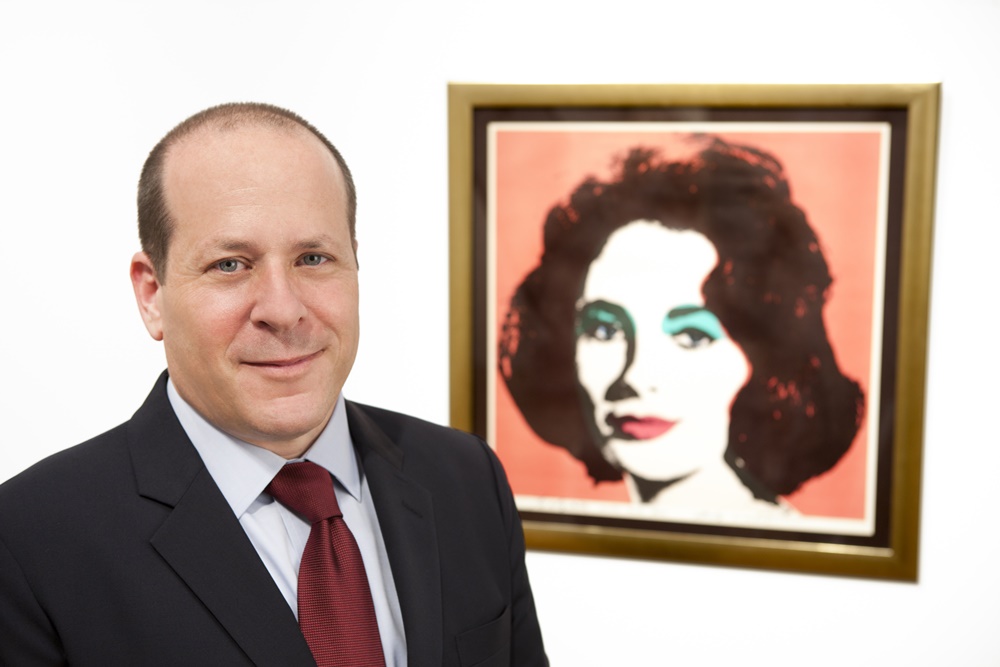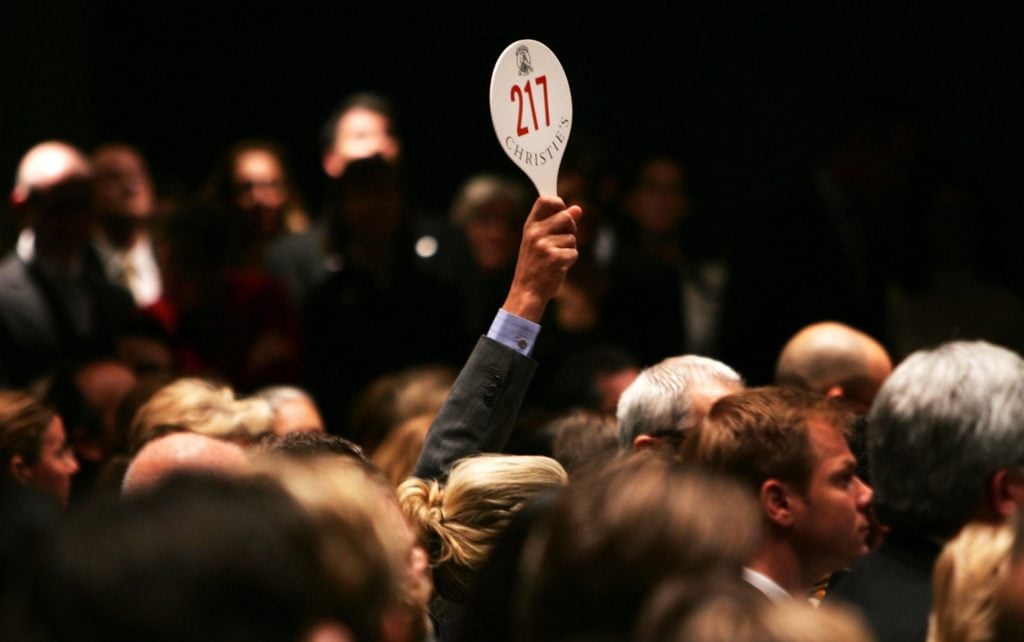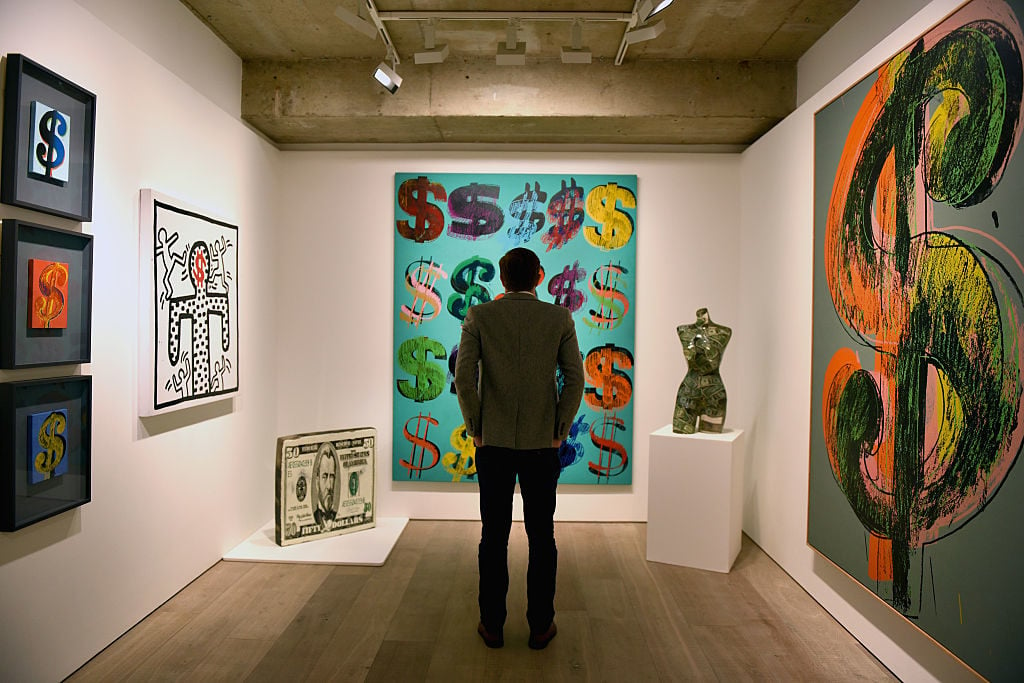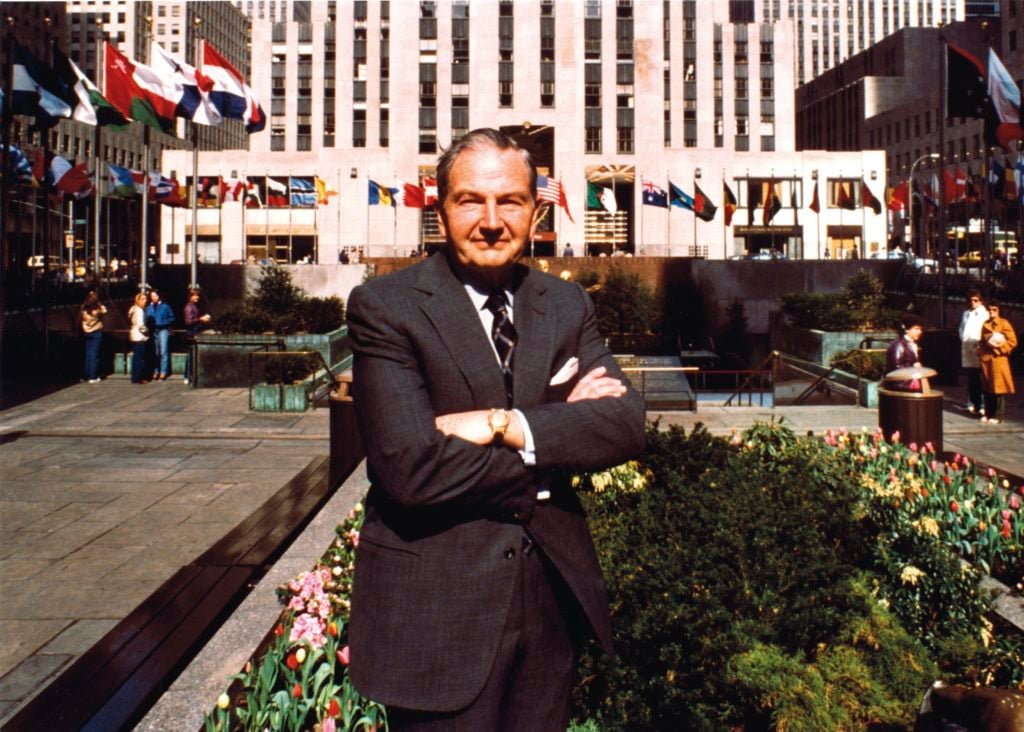Every Monday morning, artnet News brings you The Gray Market. The column decodes important stories from the previous week—and offers unparalleled insight into the inner workings of the art industry in the process.
This week, testing the ties that may (or may not) bind high art to high finance…
DRIVER’S TRAINING
On Thursday, Bloomberg finance columnist Matt Levine covered Uber’s pending initial public offering (IPO) in a way that awakened me to the many parallels between an IPO and the auctioning of a major collector’s estate, including the manic extremes the art world and Wall Street will go to for a deal.
For the uninitiated, an IPO is the event that turns a privately funded company into a publicly traded company. As the name implies, it’s the first time said company sells shares on a major stock exchange like the NYSE or the NASDAQ. It’s primarily a way for the company to raise a freight-load of cash for their next stage of strategic growth.
To do this, companies almost always (but not always always) sign a major investment bank to shepherd them through the process. Of course, there’s a competition among investment banks to try to secure this privilege—one that largely consists of each bank pitching the soon-to-be-public company on its “proper” valuation, how it will market the IPO to big institutional buyers, and the bank’s compensation for these services. All of which ultimately congeals into a story about how much money the company stands to make from the IPO by working with a particular partner.
This is obviously the same basic thing that an auction house does when courting a major consignor, only with deep-pocketed collectors standing in for institutional investors during the so-called “road show” phase. (Although there’s now tremendous crossover between major collectors and institutional investors, too. Hi, Steve Cohen, J. Tomilson Hill, et al!) But auction professionals would no doubt argue that winning the rights to offer a great art collection is as much an act of cultural ambassadorship as salesmanship.
For instance, consider what Christie’s chairman Marc Porter said in my story about the complex marketing initiative around what would become the $646 million slate of David and Peggy Rockefeller auctions:
“What is at the core of how we approach every piece of business,” he explains, “is that there is an underlying story to tell about collectors and their works of art”—a story that “brings life to” and “excites” their peers on the buy side.

Marc Porter, chairman of Christie’s Americas. Courtesy of Christie’s Images Ltd.
August 4, 2011
Notably, Christie’s learned this particular story by spending a full year embedding with the Rockefeller Archive Center, absorbing the family’s history so that the house could then cater it to different markets in the most targeted way. And if a similar mentality didn’t govern Christie’s approach to securing the Barney A. Ebsworth collection, which the house will auction next month for a total high estimate that could reach $300 million, I’ll lock into the Macaulay Culkin Home Alone face for the rest of my career.
But apparently this same evangelical engagement is necessary in winning tech IPO’s. Putting together the best on-paper bid isn’t necessarily enough, because tech founders want to believe that their companies are about more than just business. Here’s Levine:
If you are a technology investment banker and you want to win an initial public offering mandate, though, you tend to focus on method acting. The goal is not to demonstrate that you are an expert—all the big banks are perfectly competent to do an IPO—but to assure the company’s executives that you are one of them, that you share their vision and obsession. They probably don’t even play golf: They live and breathe their companies, and you’d better do the same.
What does that lead to? Well, Levine (and now I) brought this up because of Michael Grimes, billed as “Morgan Stanley’s top technology banker,” who the Wall Street Journal reports has “moonlight[ed] for years” as an Uber driver. And now the paper speculates that “that side hustle—hardly necessary, given his multimillion-dollar Wall Street salary—may help Morgan Stanley win a role on the most hotly anticipated stock-market debut in years.”
So if you think that what separates major art deals from major finance deals is a total buy-in to the client’s mythos, or the insane lengths the potential sellers are willing to go to make a deal, or even just eccentricity bordering on psychosis… maybe time to think again?
[Bloomberg]

A man holds his hand up while bidding on a work of art. Photo by Spencer Platt/Getty Images.
HIGH STAKES GAMBLING
Last Friday, highly regarded art adviser Lisa Schiff expressed mixed feelings about the recent auction success of women artists and artists of color, particularly those still early in their careers. While she says she would rather see the buy side spending bands of cash on these types of deserving works than the likes of KAWS, Schiff says she nevertheless finds it “a little annoying” that short-term speculators are partly responsible for these otherwise just results.
What most caught my interest in Schiff’s op-ed, though, is the similarities it reveals between the art market and the financial markets regarding two different vectors of worth. Like many others, Schiff sees long-term danger for artists whose auction prices outstrip their gallery prices too soon. Underlying her fear is her faith in “the traditional mechanisms of value making, in which criticality is linked to the market.”
An art market linked to criticality, of course, means one in which a small number of industry experts—gallerists, institutional curators, even scholars and critics—are considered the best judges of intrinsic value.
Auctions, on the other hand, are a much freer marketplace—one without any artificially imposed caps, where the potential buyers determine the price based on how much they perceive art to be worth.
Weirdly, this is a similar dichotomy to the one you find on Wall Street between valuation and what’s called price discovery. Valuation seeks what an asset is “actually” or “intrinsically” worth based on objective measures. Price discovery, on the other hand, is just a matter of buyers and sellers reaching an agreement about what an asset is worth in the heat of consummating a deal.
This means value can be wildly different from price, and vice versa. Recognizing the difference between the two is, in theory, one way to get rich enough in finance to be able to spend stupid amounts of money on artwork.
In a sense, Schiff’s argument is that a criticality-driven primary market reflects something like intrinsic value, and the auction market only reflects crude prices. But her problem is that those towering auction prices cast a long shadow over the experts’ judgment of value. Suddenly, everyone involved with a young artist feels pressured by the market to make the value match the price and scale up production and exposure to match the attached expectations.
And then all hell can break loose. For a memorable example, watch this candid TEDx talk by former market supernova Lucien Smith, who tells how his dizzying early success in the Zombie Formalist boom eventually led him to a rock-bottom reckoning that involved locking himself in a public restroom to contain his violent urges after his substance-abuse-as-coping-mechanism culminated in a “hell on earth” night of smoking PCP.
I’m not suggesting a straight line between outsized auction success and this kind of horror show. But I am suggesting that, when it comes to young artists, there can be more at stake in the tension between value and price than who makes money.
[artnet News]

A visitor studies Dollar Signs (1981) by Andy Warhol for “The Art of Making Money” at Sotheby’s on June 8, 2015 in London. Photo courtesy Mary Turner/Getty Images.
HERE, THERE, AND EVERYWHERE
Finally this week: On Thursday, Sonali Basik relayed Goldman Sachs and Morgan Stanley’s twin intentions to loan more money to the people who need it least. Both banks are aggressively expanding their services to high- and ultra-high-net-worth individuals by collateralizing loans with vanity purchases like yachts and—you guessed it—artworks.
They’re not alone, either. Deutsche Bank is also on the offensive in the bespoke loan business, and everyone is apparently “playing catchup” to JPMorgan Chase & Co., which is “decades” ahead.
Now, I just wrote about the state of the art finance market a couple weeks ago. That post focused on rumors that Athena Art Finance, the specialty art-lending outfit co-founded by the Carlyle Group, was quietly being offered for sale. If the gossip was true, I speculated that it might have something to do with what I saw as modest-at-best growth prospects.
But this update from Basik adds a new wrinkle. Obviously, if Goldman et al. want to hunt this business, they clearly think there’s meat on its bones. At the same time, their interest could be an even bigger contributing factor to Carlyle’s possible, still-unconfirmed interest in launching the escape pod.
At bottom, the value proposition pitched by specialty lenders is pretty simple: We will give you, Very Rich Person, financing backed by an asset that pretty much no one else will. For this unique service, we will charge you interest. But our interest rate will be higher than the one attached to a normal loan, because again, as bank analyst Christian Bolu puts it, “You can’t go to your regular, mainstream bank to get loans on your artwork.”
But what happens when very rich people can get loans on their artwork from the same Goldman-and-adjacent mega-banks that handle a bunch of their other assets and deals? Especially when mega-banks’ superior size, resources, and efficiencies empower them to charge significantly lower interest rates—only about 2.5 to three percent, according to Right Capital’s Paul Ress—than specialty art lenders, whose rates average between six and 24(!) percent, per TEFAF’s 2018 Art Dealer Finance report?
My guess: the same top-down demolition of smaller specialty players that so many people are so concerned about in the gallery sector.
I’m not pleading for sympathy on behalf of “struggling” financiers. I’m just saying that the art market’s trends are increasingly the trends of nearly everything else in the 21st century, too.
[Bloomberg]
That’s all for this week. ‘Til next time, remember: You can buy into almost anything, but you can bank on almost nothing.










